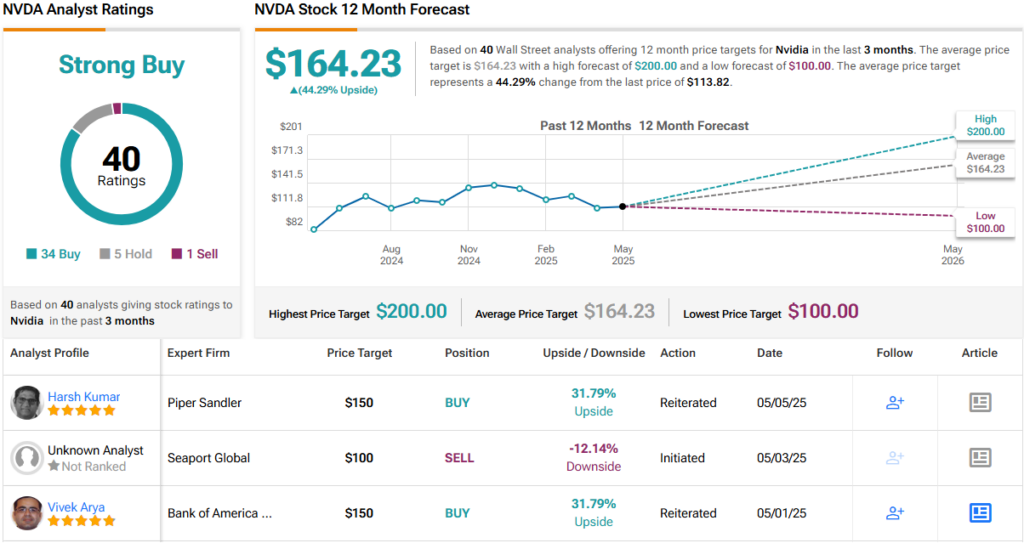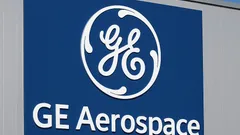AInvest Newsletter
Daily stocks & crypto headlines, free to your inbox
NVIDIA, the undisputed leader in the AI chip market, finds itself at a crossroads as it grapples with escalating U.S.-China trade tensions that threaten its access to one of the world's largest AI markets.
CEO Jensen Huang, speaking at a recent conference, underscored the stakes, warning that being locked out of China could result in a "tremendous loss" for the company. Yet, even as geopolitical risks mount, Wall Street analysts remain resolutely optimistic about NVIDIA's stock, citing its pivotal role in the AI infrastructure boom and resilient financial performance. As the company prepares to release its earnings on May 28, the question looms: Can
navigate these headwinds and sustain its meteoric rise?The AI Effect: China as a Critical Market
Jensen Huang has been vocal about the stakes involved in the rapidly evolving AI landscape. Speaking at a technology meeting conference in Las Vegas alongside
CEO Bill McDermott, Huang had expressed his thoughts to Bill McDermott and reporters on Tuesday that China’s AI market could grow to approximately $50 billion within the next two to three years. For NVIDIA, the leading provider of GPUs fueling the AI boom, being locked out of this market would be a “tremendous loss.”Huang emphasized the broader implications of access to China, stating that it would bring back revenue and taxes while creating “lots of jobs here in the United States.” He acknowledged the need for flexibility in navigating geopolitical challenges, saying, “We just have to stay agile. Whatever the policies are of the government, whatever is in the best interest of our country, we’ll support.” This adaptability is crucial as U.S.-China trade tensions escalate, directly impacting NVIDIA’s operations.
Last month, the Trump administration imposed restrictions on shipping NVIDIA’s H20 chips to China without a license. These chips, developed as a downgraded model of H200 to comply with earlier export controls and related to the globally used Hopper chips, represent a critical piece of NVIDIA’s strategy.
The restriction led NVIDIA to announce a $5.5 billion quarterly charge, signaling that its historic growth—propelling its market cap to nearly $3 trillion—could slow. At a tech conference in Washington, D.C., in April, Huang further noted China’s competitive edge, stating that the country is “not behind” in AI and praising Huawei as “one of the most formidable technology companies in the world.”
NVIDIA’s stock reflects these pressures, down about 15% year-to-date after nearly tripling in 2023. The company’s upcoming earnings report on May 28 is highly anticipated, with analysts projecting revenue growth of 65% year-over-year to $43.1 billion, according to analysts.
While this growth outpaces most megacap peers, it marks a deceleration from the previous year’s 260% surge, underscoring potential headwinds. Huang remains focused on the global appetite for AI, declaring, “The world is right now hungry, anxious to engage AI. Let us get the American AI out in front of everybody right now.”
Analysts’ Optimistic View on NVIDIA Stock Ahead of Earnings
Despite these challenges, Wall Street analysts, including Bank of America’s analyst team, remain bullish on NVIDIA’s stock as it approaches its fiscal first-quarter earnings on May 28. They forecast that NVIDIA and its U.S.-based AI peers could see a 20% hit to the projected $500 billion AI infrastructure market by 2028–2029. BOA team attributes half of this impact—10%—to reduced access to China, a major player in global cloud spending, and the other 10% to the uncertainty surrounding U.S. AI export controls. Recent speculation suggests these controls might be leveraged as bargaining chips in trade talks with Tier 2 countries, potentially easing some restrictions.
Yet, Bank of America Analyst team remains confident in the remaining 80% of the market—around $400 billion—projecting that 60% will stem from sustained investments by Tier 1 markets (the U.S. and 18 allied countries) in cloud AI infrastructure. The other 20% is expected from on-premise enterprise deployments, based on his industry insights. Notably, the team’s $500 billion total addressable market (TAM) estimate is conservative compared to NVIDIA’s own $1 trillion data center infrastructure capex forecast shared at its GTC event.
For the May 28 earnings, BOA team predicts a modest beat, with sales around $44 billion against a consensus of $43 billion. However, they anticipate flat sequential growth in Q2 at roughly $44 billion, below the $46.9 billion consensus, partly due to the H20 export ban. Gross margin pressures also loom, with increased U.S. insourcing and revenue softness likely to hold second-half margins at 72%, short of the Wall Street’s 73% expectation. This could lead to a 10% downward revision in fiscal year 2026 EPS estimates, aligning closer to the team’s $3.97 forecast versus the current $4.43 consensus.
Despite these hurdles, the BOA team maintains a Buy rating with a $150 price target, implying a 32% upside. This optimism is widely shared, with NVIDIA earning a Strong Buy consensus from 34 Buy ratings, 5 Holds, and 1 Sell. The average price target of $164.23 suggests a potential 44% gain over the next year.

Conclusion
Jensen Huang’s NVIDIA is at a pivotal moment, balancing the promise of AI-driven growth with the realities of geopolitical and market challenges. The potential loss of China’s $50 billion AI market looms large, yet analysts of Bank of America see a resilient future anchored by NVIDIA’s critical role in AI infrastructure. As the May 28 earnings approach, the company’s ability to adapt and capitalize on global AI demand will determine whether it can maintain its upward trajectory amidst uncertainty.
Two minutes to understand what`s happening in daily premarket trading.

Nov.04 2025

Oct.21 2025

Jul.17 2025

Jul.15 2025

Jun.16 2025
Daily stocks & crypto headlines, free to your inbox
Comments
No comments yet